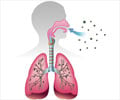To get clues about everlasting life, ancient philosophers took to alchemy

The study, led by researchers at the University of Pennsylvania, identifies a new molecular circuit that controls longevity in yeast and more complex organisms and suggests a therapeutic intervention that could mimic the lifespan-enhancing effect of caloric restriction, no dietary restrictions necessary. After all, says senior author Shelley Berger, PhD, "who wants to live on 500 calories a day?"
Berger, a Penn Integrates Knowledge Professor in the departments of Genetics and Cell and Developmental Biology at the Perelman School of Medicine and the department of Biology in the School of Arts and Sciences, studies epigenetics, the science of the control of genetic information. Epigenetics comprises multiple regulatory layers, including chromatin packaging -- the orderly wrapping of DNA around histone proteins in the cell nucleus. By altering this DNA packaging, cells can control when and how genes are expressed.
"Aging is, in part, the accumulation of cellular stress," she explains. "If you can better respond to these stresses, this ameliorates the damage it can cause."
Berger and her team looked for chromatin-associated genes that could influence longevity by searching for genes that already were implicated in epigenetic regulation that might extend lifespan when deleted in the yeast, Saccharomyces cerevisiae.
One such gene improved lifespan by about 25 percent - this would correspond to an increased lifespan in humans from 75 years to about 95 years - a substantial benefit to longevity, notes Berger. The research, conducted by postdoctoral fellow Weiwei Dang, PhD, aimed to unravel how this increase in longevity was achieved and if it was related to cellular stress.
First, the team asked whether the gene ISW2 is part of previously identified longevity pathways, especially those associated with caloric restriction, a well-known strategy for extending lifespan. But pathways involving a form of chromatin modification (histone acetylation) came up empty, as did an alternate pathway involving growth control, suggesting ISW2 functions through a never-before-seen mechanism.
The team then looked for answers in the function of the ISW2 protein, and found that its absence alters the expression of genes involved in protecting cells from such stresses as DNA damage.
Deletion of ISW2 increases the expression and activity of genes in DNA-damage repair pathways - an effect also seen during calorie restriction.
The gene ISW2, it turns out, is involved in chromatin remodeling -- it controls the spacing and distribution of the histone "spools" around which DNA wraps. Normally, ISW2 dampens stress-response pathways, possibly because overactivation of these pathways is deleterious early in life, Berger speculates. Deletion or inactivation of the ISW2 gene activates those pathways, priming the cells to more effectively handle stress-associated genetic scars as cells age.
This effect is not limited to yeast. When Berger's team reduced the levels of a related gene in the nematode worm, Caenorhabditis elegans, they observed a 15 percent improvement in longevity, which is similar in magnitude to the lifespan extension observed in other worm longevity pathways. Similarly, knocking down expression of a human homolog in cultured human cells boosted the expression of stress-response genes that, again, like yeast, occur in DNA-damage repair pathways.
These findings suggest a pathway analogous to the one identified in yeast performs a similar function in humans, keeping stress-response genes in check - and if inhibited, could boost these pathways. But that has yet to be established. And, it is far from clear if tweaking these pathways can actually extend healthy human lifespan - but, of course, a goal worthy of further investigation, say the authors.
But, if there is a human version of the ISW2 pathway, these data suggest a possible therapeutic strategy for combating aging-related disorders in humans, Berger says. Calorie-restricted diets have been shown to extend lifespan in organisms from yeast to primates.
But such diets are, well, difficult to "stomach."
Assuming these findings can be replicated and extended to humans, small-molecule inhibitors of the human form of ISW2 could potentially replicate that effect, leading to clinical benefits without dietary restrictions. More research must be done to work that out, however, note the researchers.
The study involved researchers at Penn, the Wistar Institute, the University of Washington, the Buck Institute for Research on Aging, and the University Medical Center Utrecht. Other Penn authors are Jean Dorsey, Gabriel Otte, Kajia Cao and Rocco Perry from the Department of Cell and Developmental Biology and Jennifer Wanat and F. Brad Johnson from the Department of Pathology and Laboratory Medicine.
The study was supported by the National Institutes of Health (P01AG031862) and the Ellison Medical Foundation.
Penn Medicine is one of the world's leading academic medical centers, dedicated to the related missions of medical education, biomedical research, and excellence in patient care. Penn Medicine consists of the Raymond and Ruth Perelman School of Medicine at the University of Pennsylvania (founded in 1765 as the nation's first medical school) and the University of Pennsylvania Health System, which together form a $4.3 billion enterprise.
Source-Newswise












